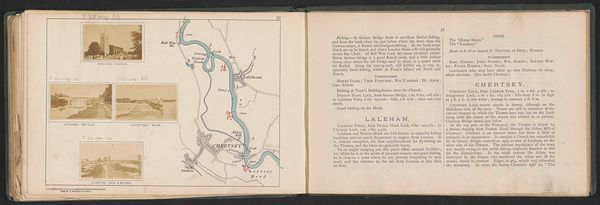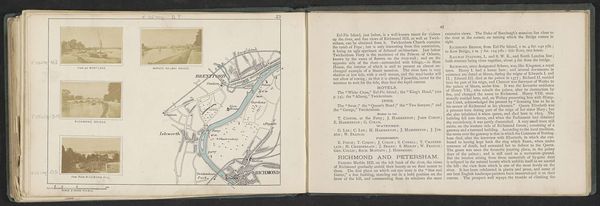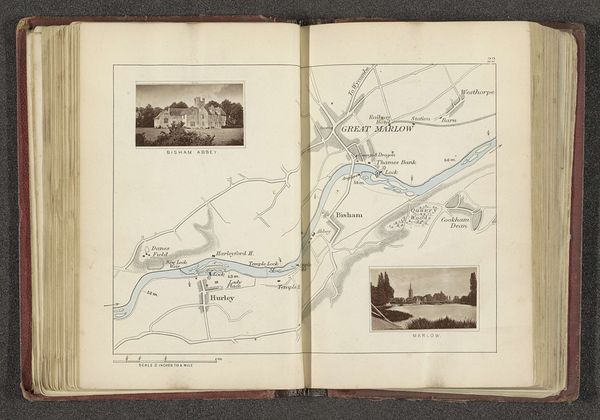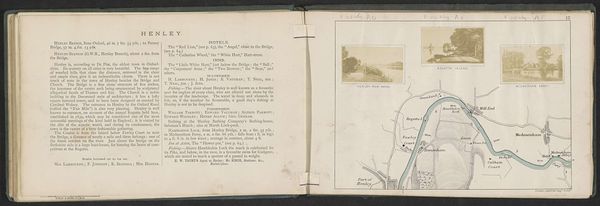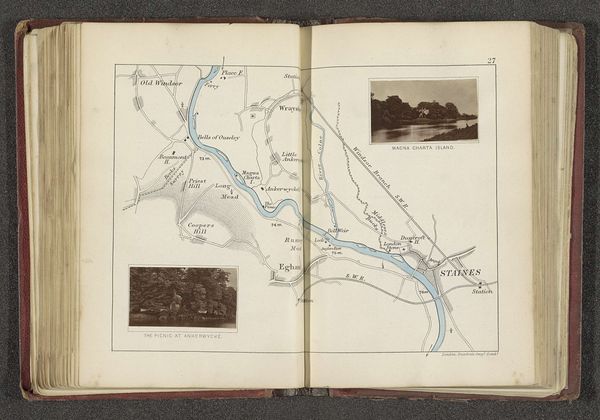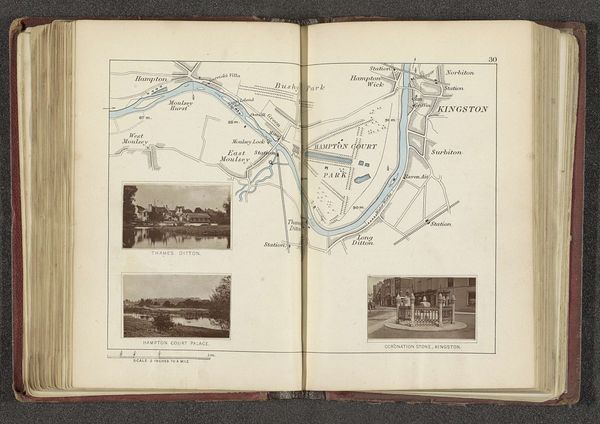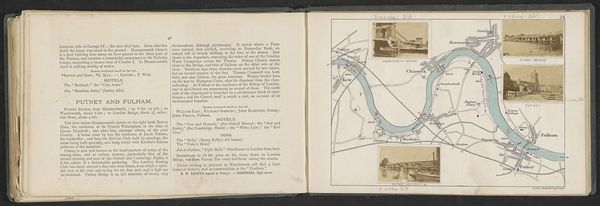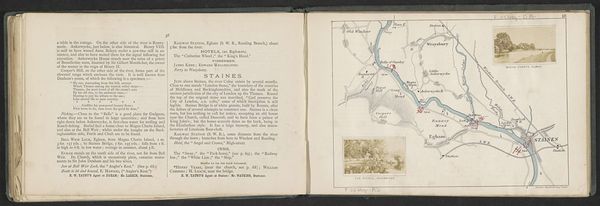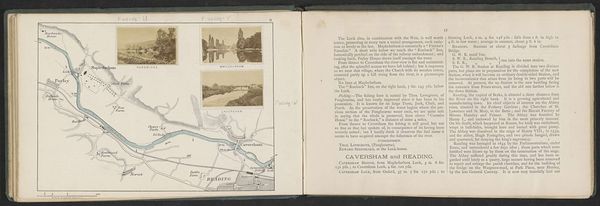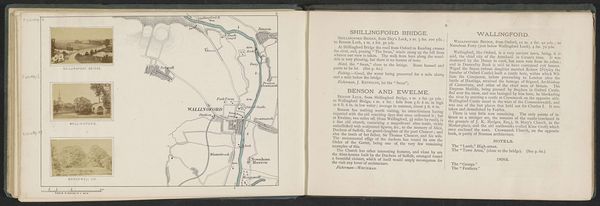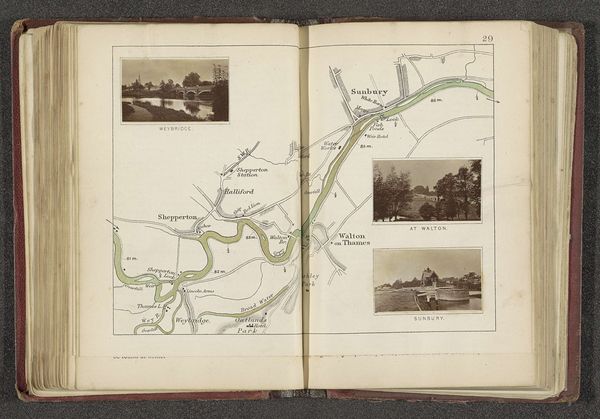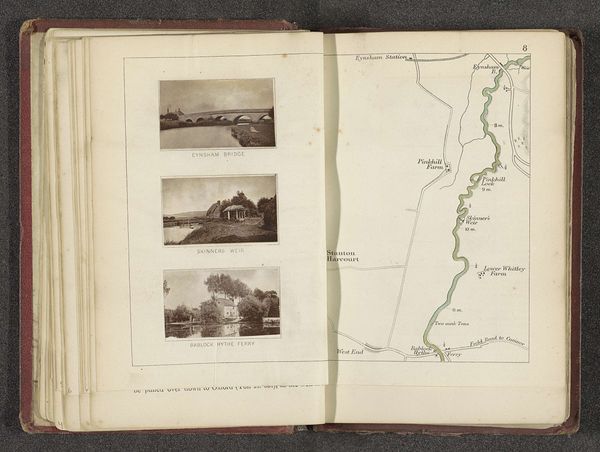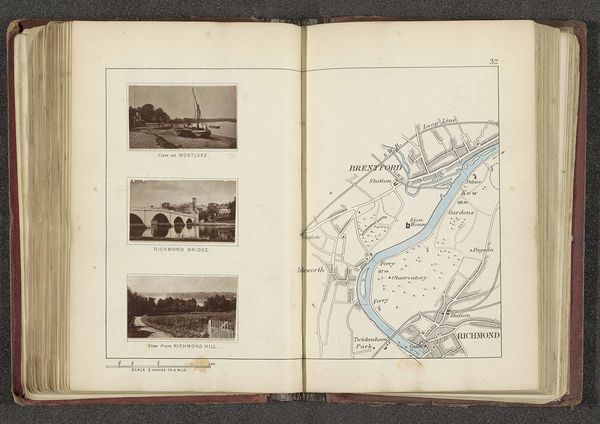
drawing, print, etching, plein-air, paper, photography, watercolor, ink, pencil
#
drawing
#
aged paper
# print
#
impressionism
#
etching
#
plein-air
#
sketch book
#
hand drawn type
#
landscape
#
river
#
paper
#
photography
#
personal sketchbook
#
watercolor
#
ink
#
pen-ink sketch
#
pencil
#
ink colored
#
pen work
#
sketchbook drawing
#
storyboard and sketchbook work
#
sketchbook art
Dimensions: height 30 mm, width 52 mm
Copyright: Rijks Museum: Open Domain
Curator: Let’s turn our attention to this fascinating piece by Henry W. Taunt from 1871, "Gezicht op de Theems bij landgoed Cliveden," or "View of the Thames at Cliveden Estate." It's rendered with photography and watercolor on paper. Editor: Right, what first strikes me is its open sketchbook feel. The ink sketches, aged paper... it evokes a sort of wistful surveying, like a forgotten summer afternoon by the river. It's unassuming but hints at stories layered beneath the surface. Curator: That's astute. Taunt was deeply embedded in Victorian society. Consider the impact of photography in democratizing landscape art. Prior to this, such imagery was typically commissioned by the upper classes. This brings visibility to diverse viewers who could potentially relate or compare their realities. Editor: Exactly! There’s this charming, almost folksy quality because it blends map-making, snapshots, and literary excerpts. Curator: Precisely. Think about the Victorian era's preoccupation with geographic documentation and classification. Editor: It speaks of this romantic impulse of trying to contain nature with words and images while being intimate. Does that tension make sense to you? Curator: Absolutely. Now think about the estate—Cliveden—as a historically charged site. Editor: It’s true. You can't ignore who historically had access and ownership over a privileged landscape such as this one. Curator: I think you make a sharp connection. It reminds us of power relations intrinsic to land ownership and its representation. Editor: The subtle melancholia—is it my own reading of that time? Curator: It’s in the textured paper, the blurred photographs, almost as if resisting easy consumption or idealized portrayal. It is in the act of documenting through these techniques that brings that nuance to the forefront. Editor: I think this quiet piece manages to hold all these different energies together in its small scale. Curator: It challenges notions of picturesque landscapes, highlighting historical context. Editor: Definitely gets you wondering about who held the pencil and camera that day, what they saw and felt. Curator: Ultimately, that is how we can start reading beyond pure aesthetic appeal, I think. Editor: Agreed, always a multi-layered reflection of people and the landscape they shape and inhabit, consciously or otherwise.
Comments
No comments
Be the first to comment and join the conversation on the ultimate creative platform.
